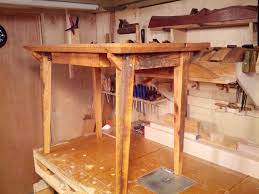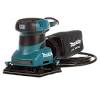This year I have taught eight classes in woodworking. I can assure you that each class meets on Wednesdays. This is the day when you work your hinder off (my hinder is long gone; ask my wife) and you dont really seem to be much further along at the end of the day than when you started.
Oh, and this is the day when the instructor ruins some of your workpieces.
It was a great start to the day. We took the tops out of the clamps and cut them all to size on Kelly Mehlers Felder table saw with a sliding crosscut table. The sliding table was capable of handling a maple top 8 cm by 61 cm by 8 cm. It took a small army of people to transport each top.
And while Kelly was crosscutting, I demonstrated how to crosscut the tops to size with a Makita circular saw and an edge guide. No surprises here: With the Felder 10 away, nobody opted to use the circular saw.
Then it was onto the detail work: cutting the tenons and dressing the legs. For the tenons, we set up two stations: One was a table saw with a dado stack that cut the tenons in one whack. Another setup was a table saw for cutting the shoulders, and a bandsaw to cut the cheeks.
I was able to set up the machines but I misunderstood the setup of the table saw. I trimmed the shoulders and did not do any other work. I could blame the Europeans and their fancy table saw fences, but I wont. It was me. It was me. The fence was moved, and one student made tenons with longer shoulders.
Kelly had spare parts for the wings so we were able to quickly get back on track.
Upstairs, the handwork began. The students started dressing their maple legs with planes after I taught them how to sharpen and set up handplanes. It is hard maple. The stuff is hard to work. So I helped some students tune their planes a little higher. We still have a lot of tuning to do.
I also got to give a demonstration in the care and feeding of augers and the bit and brace.
Wednesday is now almost over. Thursday is always a great day. The maple sticks we’ve been tinkering with are going to be used as workbench bases. It’s like setting fire to a campfire: When you combine two pieces of wood, things get interesting.



